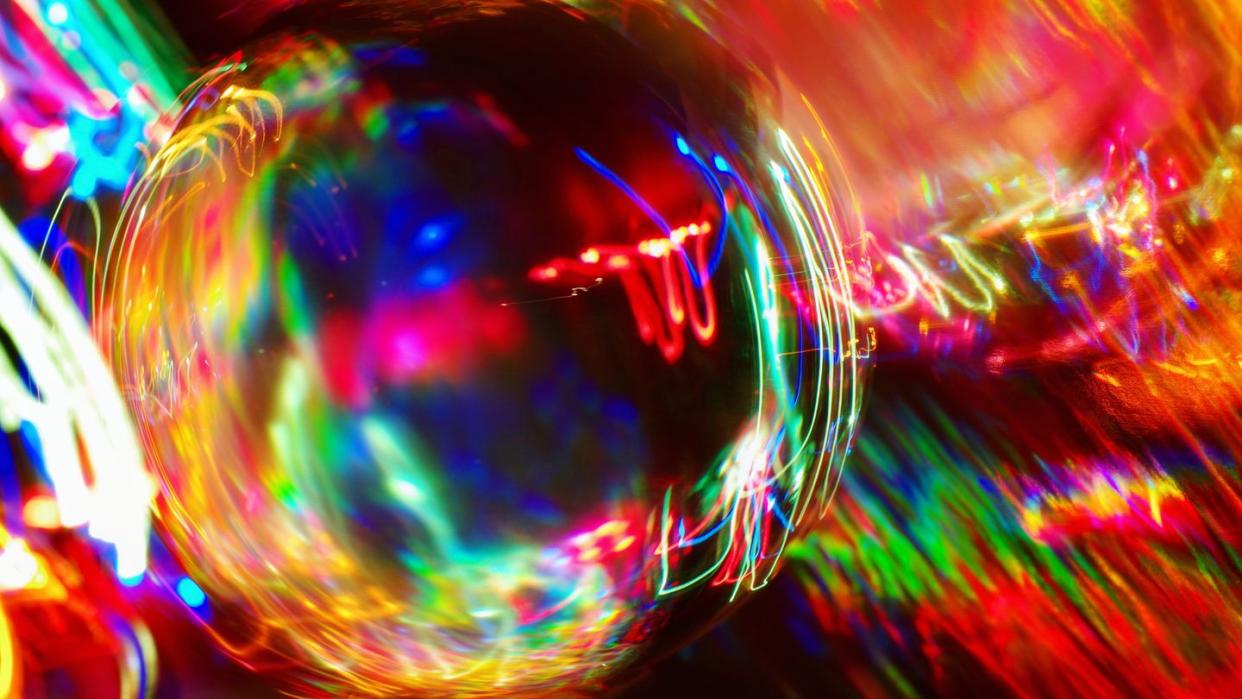A 12-Mile Marvel Has Stunningly Turned Gravity Into Light

A new paper suggests that we could search for photons created by gravitational waves.
A specific physical response turns gravitons from these waves into photons of electromagnetism.
Scientists believe we can continue to find broader ways to study gravitational waves.
Apparently, dead stars can still rage against the dying of the light. In an unusual physical reaction, gravity itself is turned into light that can flash after a star has died. We’ve all heard that light is a wave that can behave as a particle, but this is next-level transformational physics.
Visible light is comprised of photons, and photons are one of the fundamental tools of astronomy. “Today, photon-based astronomy spans 15 orders of magnitude in frequency, with an array of sophisticated telescopes from the radio through to gamma-rays and continues to play an active role in guiding our understanding of the Universe at the most fundamental level,” the researchers behind this discovery explain in their paper, which appears now on arXiv. That means telescopes are picking up almost the whole electromagnetic spectrum that’s accessible to us—from extremely tiny wavelength gamma rays to honestly enormous radio waves.
But the next big form of astronomy, they suggest, is gravitational waves. A host of new detectors have started to pick up these waves, which can include ultra high frequency gravitational waves (UHFGWs). “Further Standard Model sources of UHFGWs, if predicted, would offer important milestones for detection, requiring a wide array of experimental approaches,” the team wrote. And this all leads us back to dead stars.
Neutron stars are “dead stars” that are solid on the outside and stripped of almost everything but neutrons. They’re about 12 miles in diameter, but have more than the mass of our Sun crammed into that tiny volume. And they have powerful magnetic fields, including magnetospheres. When gravitational waves strike the magnetospheres of neutron stars, the scientists explain, the gravitational particles—theoretical ones called gravitons—resonate and are changed into very lightweight photons.
This happens, they suggest, via a reaction called the inverse Gertsenshtein process. Mikhail Evgeny Gertsenshtein, for whom the process was named, was a Russian theoretical physicist who first described what he believed would happen when an electromagnetic wave struck a strong magnetic field. This collision would, he said, spark off a gravitational wave of similar frequency. So, the inverse of this Gertsenshtein process is when a gravitational wave does the striking, sparking off an electromagnetic wave.
What does this all mean? Well, gravitational waves are still being heavily studied and interpreted, and while we can detect them in some ways, the researchers explain that physicists must figure out more ways to find evidence of them using the tools we have now. With more robust amounts of data and observation, other scientists can push forward into new areas of study.
So, if we can find an electromagnetic signature made of photons that’s a consequence of gravitational waves (or UHFGWs in particular), we can reverse engineer the situation and understand that a gravitational wave was also there. And, as in decades of previous astronomical study, the presence of photons can help guide us into new and deeper portions of outer space.
“This leaves the door open to a stronger and wider range of constraints on high frequency gravitational waves,” the researchers conclude.
You Might Also Like

